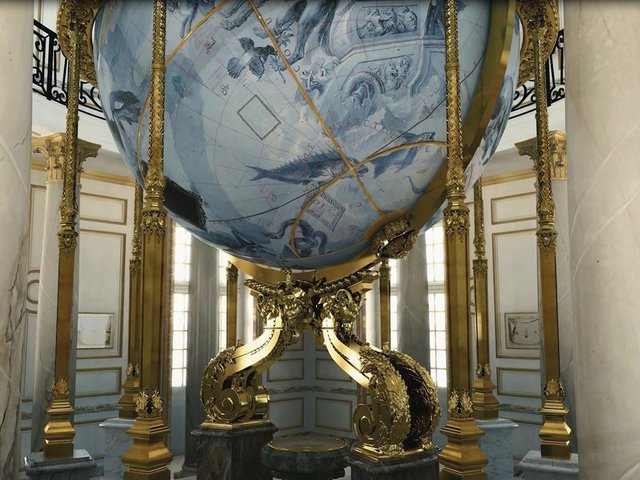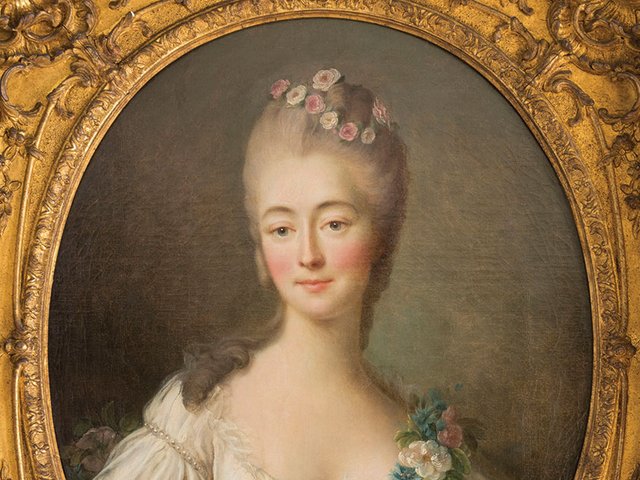This winter, the 300th anniversary of the death of Louis XIV is commemorated in a massive exhibition at the Chateau of Versailles, Le roi est mort (27 October-21 February). One exhibit is a transcript of his last words, framed to hang as a warning by the bedside of his great-grandson and successor Louis XV: “I loved wars and buildings too much.” The Sun King knew that he had left France devastated, its finances in the state of chaos that he had been determined to reform and its rivals much stronger than they had been at the start of his personal rule in 1661.
Louis XIV did, however, succeed in his determination—as his finance minister, Jean-Baptiste Colbert, told the great sculptor Bernini in 1665—to spare nothing to make the arts flourish in France. Since the reign of Saint Louis in the 13th century the French monarchy, reflecting its need to project power and wealth, had outshone all others as a patron of the arts (as the great exhibition at the Louvre in 2004, Paris 1400, confirmed). By the multiplicity and intensity of his artistic passions—and the money at his disposal—Louis XIV raised this tradition to new levels of splendour. A better patron than ruler, he commissioned, and in some cases helped design, medals, jewels, fans and clothes; books, maps, prints and pictures; music and ballets; and, above all, sculpture, fountains, gardens and buildings. Long after the overthrow of his monarchy, the palace and park he created at Versailles continue to act as an inexhaustible source of cultural capital—and tourist revenue—for France.
Kilt of sun rays

The king was himself a work of art. Until the age of 30 he repeatedly danced in court ballets, as spring or—dressed in a kilt of sun rays—Apollo, the leader of the muses and the god of the sun, which he took as his personal emblem. On great occasions his coat glittered with embroidery and jewels. The king’s personal jewel casket, densely covered in gold filigree, made in Paris in 1676 by Jacob Blanck from Nuremberg, is one of the treasures of the rooms of art from Louis XIV to Louis XVI, which opened last year in the Louvre.
Louis also helped make Paris the fashion capital of Europe. Partly to help the French dress industry, he used his mistress Madame de Montespan, wearing a golden dress covered in point de France lace, as “a triumphant beauty to display to all the ambassadors”, in the words of the aristocrat Madame de Sévigné. Foreign monarchs like the kings of England and Sweden or the Elector of Saxony tried to dress like Louis XIV. They ordered their clothes, as well as other luxury goods, in Paris through special buyers they maintained there, in addition to their official diplomats.
Bernini told the king that for someone who had not seen Italy, he had remarkably good taste
Aspects of Louis XIV’s patronage resembled that of other royal collectors, including his father-in-law, Philip IV of Spain. Like them, he accumulated luxury objects such as jasper vases and agate cups, Classical cameos and antiquities, and pictures, although even at the end of his reign he had fewer than the King of Spain—about 1,500 to 2,000. However, Louis’s passion for medals distinguished him. He had antique and contemporary examples—the latter often with laudatory inscriptions such as Rex, Dux et Miles (king, leader and soldier) or Nec Pluribus Impar (of many, none is his equal)—and commissioning, inspecting and rearranging them in special cases was one of his favourite occupations. Medals boasting of Dutch power so maddened Louis XIV that they encouraged him to declare war on the Netherlands in 1672.
But, as Louis admitted on his deathbed, buildings were his principal passion after war. In 1665, Bernini was lured from Rome to redesign the palace of the Louvre for the king. Colbert, saying that Bernini knew nothing about the spaces for guards, ministers and “persons of quality” necessary in a French palace, ensured that he was not used. Indeed, there was much tension between the sculptor and members of the French court. But the King liked Bernini, as he did his other favourites: premier Peintre Charles Le Brun, his chief gardener, André Le Nôtre, and his architect, Jules Hardouin-Mansart. Bernini told the king that for someone who had not seen Italy, he had remarkably good taste. Before he sculpted Louis, for the bust now at Versailles, he scrutinised him for a long time, then ran his hands through the king’s hair to make it look better.
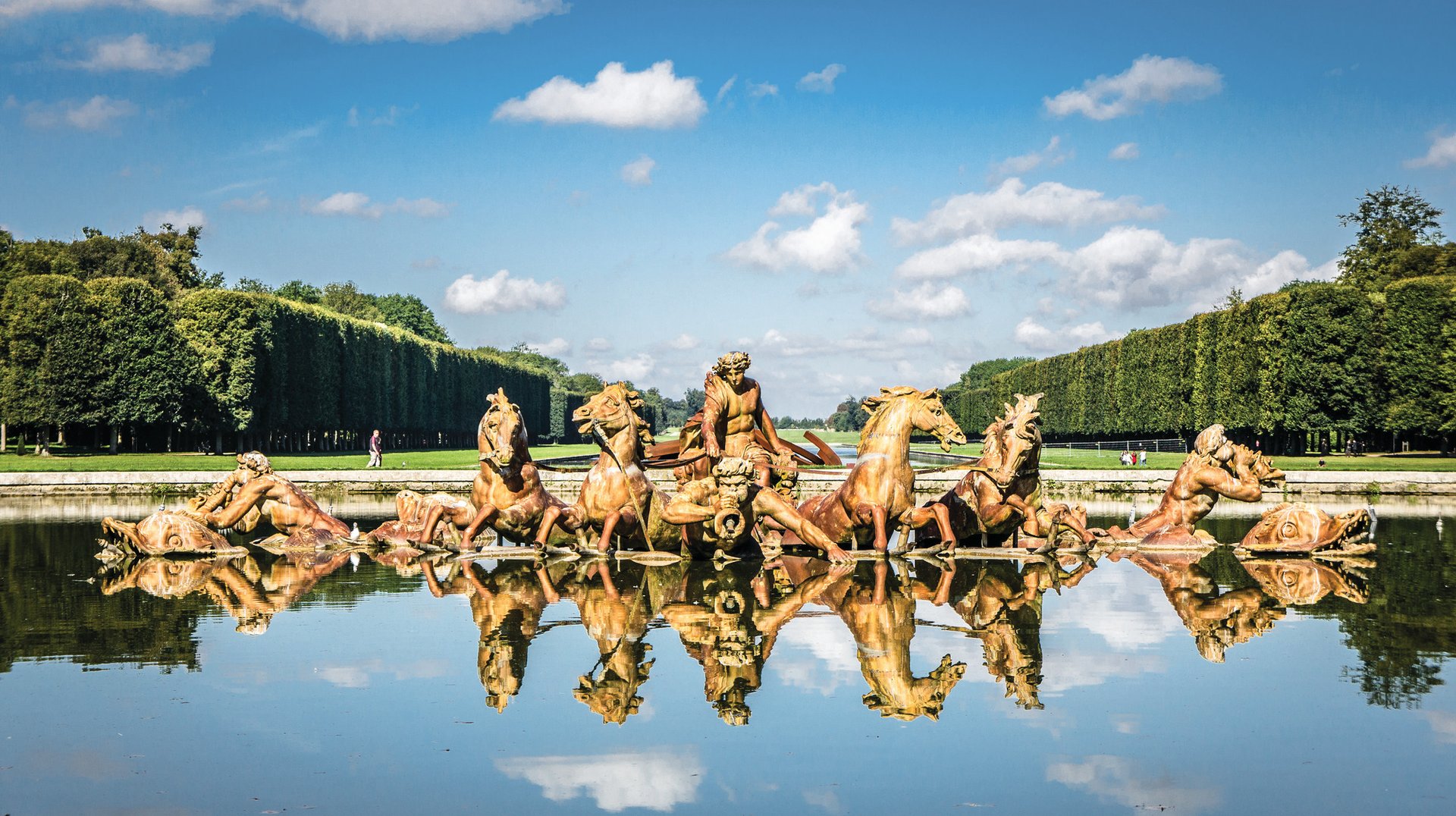
In the end, instead of Bernini’s Roman Baroque, Louis XIV chose the monumental façade we see today for the Louvre’s east wing, decorated with a colonnade of coupled Corinthian columns, designed by Perrault and D’Orbay and covered in Ls, crowns and sun-rays. The Louvre was both a royal palace and—long before the opening of a public museum in 1793—a palace of the arts. Some rooms were used to display antiquities or pictures from the royal collection, or an annual show of new paintings. Others accommodated archives, the Imprimerie Royale, artists and furniture-makers like André-Charles Boulle who made the luxurious bronze and gilt marquetry furniture the king loved; and the academies of painting and sculpture, and inscriptions.
Military “cité idéale” The Hotel Royal des Invalides was even more imposing than the Louvre. It was a military “cité idéale”, two-and-a-half centuries before Le Corbusier coined the phrase, on the south-west edge of Paris. Its 15 courtyards contained barracks, a monastery, a hospice, a bakery and factories, in addition to the church under its glorious dome. At the ceremony of inauguration in 1706, the king congratulated the architect Hardouin-Mansart. Then, turning to his wife, the king said: “Madame, seeing you here, I cannot refrain from complimenting you for the share that you must take in the glory that Monsieur your husband is receiving today.” As with the arts, women were more prominent at the court of France than at any other.
Louis XIV also added to Paris two triumphal arches celebrating his victories, the Portes Saint-Denis (1672) and Saint-Martin (1674), the latter showing the king as a naked Hercules, crowned by victory. After 1680 the Place des Victoires and the Place Vendôme were built around statues of the king, which were also erected (and in most cases re-erected under Louis XVIII in the 19th century, after their destruction by revolutionaries), according to an official programme in many other cities—Lyons, Dijon, Montpellier, Rennes and Quebec among them. Among the best known is the one still visible beside the high altar in Notre Dame.
No doubt in reaction to the humiliations he had suffered during the civil war of the Fronde (1648-52), where he was forced to flee rebel armies, and Paris itself, by night, and to dismiss his favourite chief minister, Cardinal Mazarin, Louis XIV had a passion, even a mania, for self-commemoration. This passion was expressed above all in the gardens and palace of Versailles, which he began to transform in 1661. It was his personal project, pursued against the advice of Colbert, who preferred him to live in the Louvre. The king may have been influenced by the magnificent houses built by two ministers: the Château de Richelieu instigated by Cardinal Richelieu, now demolished, and Vaux-le-Vicomte by Nicolas Fouquet, Louis’s superintendent of finance. After Fouquet’s imprisonment in 1661, the king took some of his best sculptures and tapestries for Versailles. Other possible models were the palace of Venaria Reale near Turin, started by his first cousin, Duke Charles Emmanuel of Savoy, in 1659 and Chambord and Fontainebleau, built by François I.
“His house at Versailles is something the foolishest in the world; he is galloping over one’s head in every ceiling”
Versailles, however, differed from other palaces by its size, by the number of surrounding satellite houses such as Marly, Trianon and Clagny, by the luxury with which it was furnished and decorated; and by the ceaseless round of “divertissements” the king organised there. As early as 14 October 1663, wrote one guest, “every day balls, ballets, comedies, music for voices and instruments of every kind, violins, promenades, hunts and other diversions have succeeded each other”. They would not stop—except for a gap of seven years after Louis XIV’s death—until 1789.
Colbert complained in 1665. “Ah, what a pity that the greatest and most virtuous prince… should be judged by the measure of Versailles!” He feared that Le Nôtre and the architect of the first phase of the expansion, Louis Le Vau, would “drag your majesty from schemes to schemes to render their works immortal”. However, even from distant battlefields, Louis personally supervised its construction and decoration, demanding to know “every detail”. Charles Perrault of the Académie des Inscriptions claimed that, whenever his architects challenged his wishes, the king said “in a loud voice and which appeared inflected with anger: do what you please, but if you destroy it, I will have it rebuilt as it is and without changing anything in it”.
“Spirit of youth everywhere” The central room, the Galerie des Glaces, was not only the largest in Europe but its frescoes, by Charles Le Brun and his studio, glorified the king alone—not, as other palaces did, dynastic ancestors or the gods of Olympus. From 1682 Versailles replaced Saint-Germain-en-Laye as Louis’s principal residence—although he continued to use other royal chateaux, such as Compiègne or Fontainebleau, and much of the royal family, household and government remained in Paris. It continued to expand until the end of his reign. In 1699, creating new rooms for his granddaughter, the Duchesse de Bourgogne, Louis XIV said: “There must be a spirit of youth everywhere.” By then, it was the most celebrated palace in Europe.
As well as a royal residence, Versailles was a hunting lodge, a permanent music and dance festival, a fashion parade, a finishing school and a military and government headquarters. Books of engravings, published by the royal press, brought views of Versailles to the courts of Europe. Other monarchs, from Peter the Great in Russia to João V in Portugal, built similar palaces and pavilions.
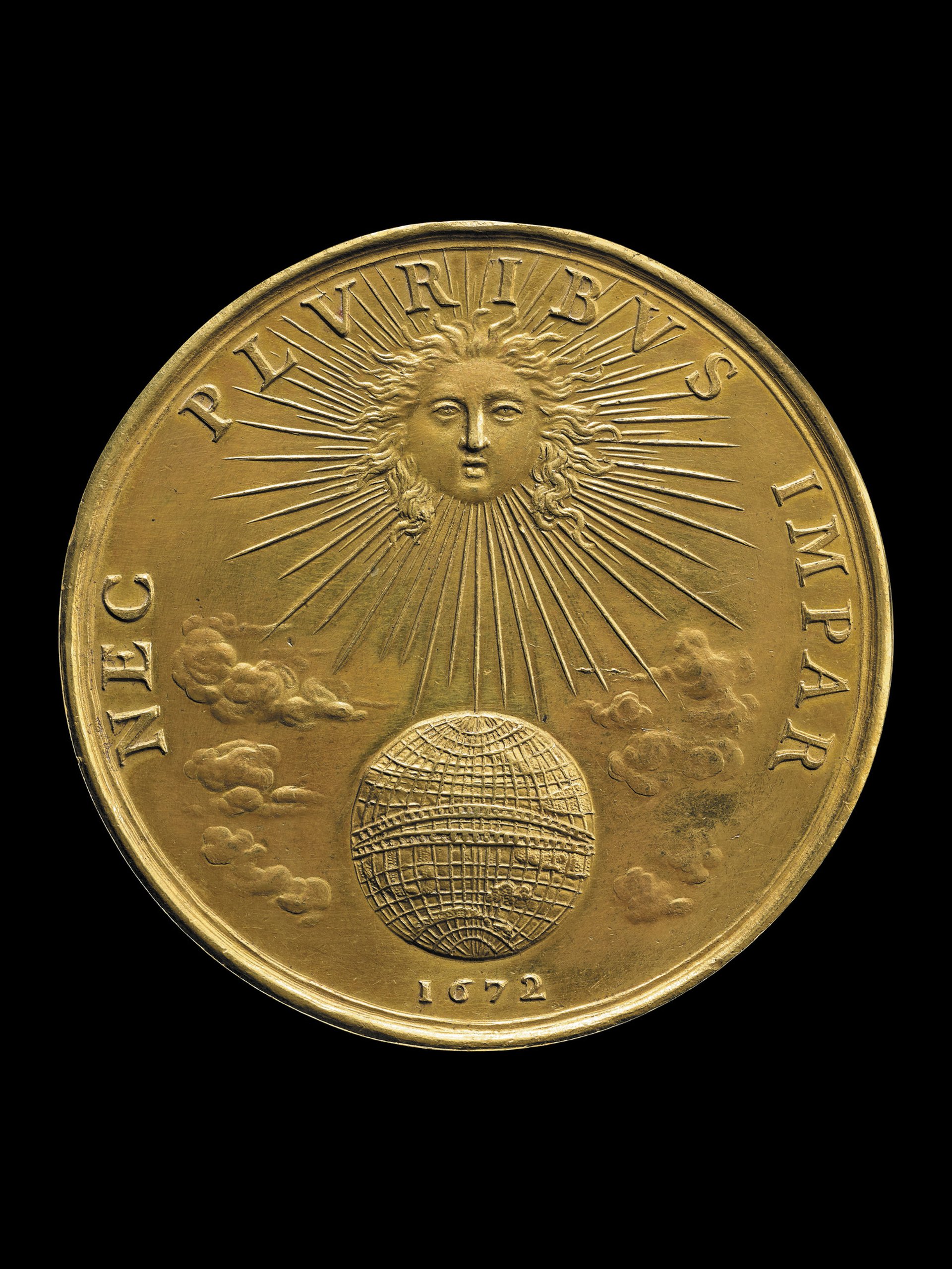
But there were critical voices. The English diplomat Matthew Prior wrote: “His house at Versailles is something the foolishest in the world; he is strutting in every panel and galloping over one’s head in every ceiling.” But Prior’s master, William III, would also be glorified in prints and medals, portraits and frescoes—partly in competition with Louis.
Louis XIV loved his gardens as much as his palaces, inspecting them almost every day, even in the middle of winter and at the age of 70. Tuberoses, hyacinths and daffodils, which sometimes overpowered courtiers with their scents, packed his parterres. As is evident today, most of the garden consists of avenues in straight lines, decorated with fountains and the largest collection of statues in Europe. Like his medals, they linked the king to the Classical past: they showed Latona, Ceres or Apollo, surrounded by muses or driving the chariot of the sun. There were also, however, proto-Romantic gardens with winding paths and wildernesses. The ultimate honour for visitors he wanted to impress was a tour of the gardens as the fountains played. Many workmen and soldiers had died building aqueducts and diverting rivers to bring water to Versailles for those fountains.
Palace of paper Versailles was a palace of paper as well as stone. The literature it inspired included sermons by the court preacher Jacques-Bénigne Bossuet denouncing the king’s mistresses. Thanks to the king’s favour and courtiers’ love of mockery, Molière could be especially daring about class and religious hypocrisy in the plays he wrote to amuse them. Racine not only wrote plays for the court but also, as his historiographer, recorded Louis XIV’s campaigns. The flood of memoirs, epigrams, letters written at court (none more scathing than the correspondence of the king’s German sister-in-law, Elizabeth Charlotte) serves as a counterblast to the narrative of events in official propaganda, as well as an education in psychology.
Louis XIV made Versailles a cultural force comparable to Renaissance Florence or Golden-Age Weimar. Today, thanks to brilliant staff and generous funding, Versailles is in a better state than at any time since the court’s abrupt departure on 6 October 1789. The Centre de Musique Baroque fills the palace with music; the Académie du Spectacle Équestre brings horses to the courtyards and gardens; the Research Centre consistently publishes new work on the court, including a biographical database for its entire personnel. Every year, five million people visit the palace.
Three hundred years after his death, Louis XIV lives on.
• Philip Mansel is writing a biography of Louis XIV. Previous books include a life of Louis XVIII; Dressed to Rule, a study of court dress from Louis XIV to Elizabeth II; and The Eagle in Splendour: Inside the Court of Napoleon, reissued this year with a new introduction. He is a member of the committee of the Centre de Recherche du Château de Versailles and editor of The Court Historian, the international journal of the Society for Court Studies
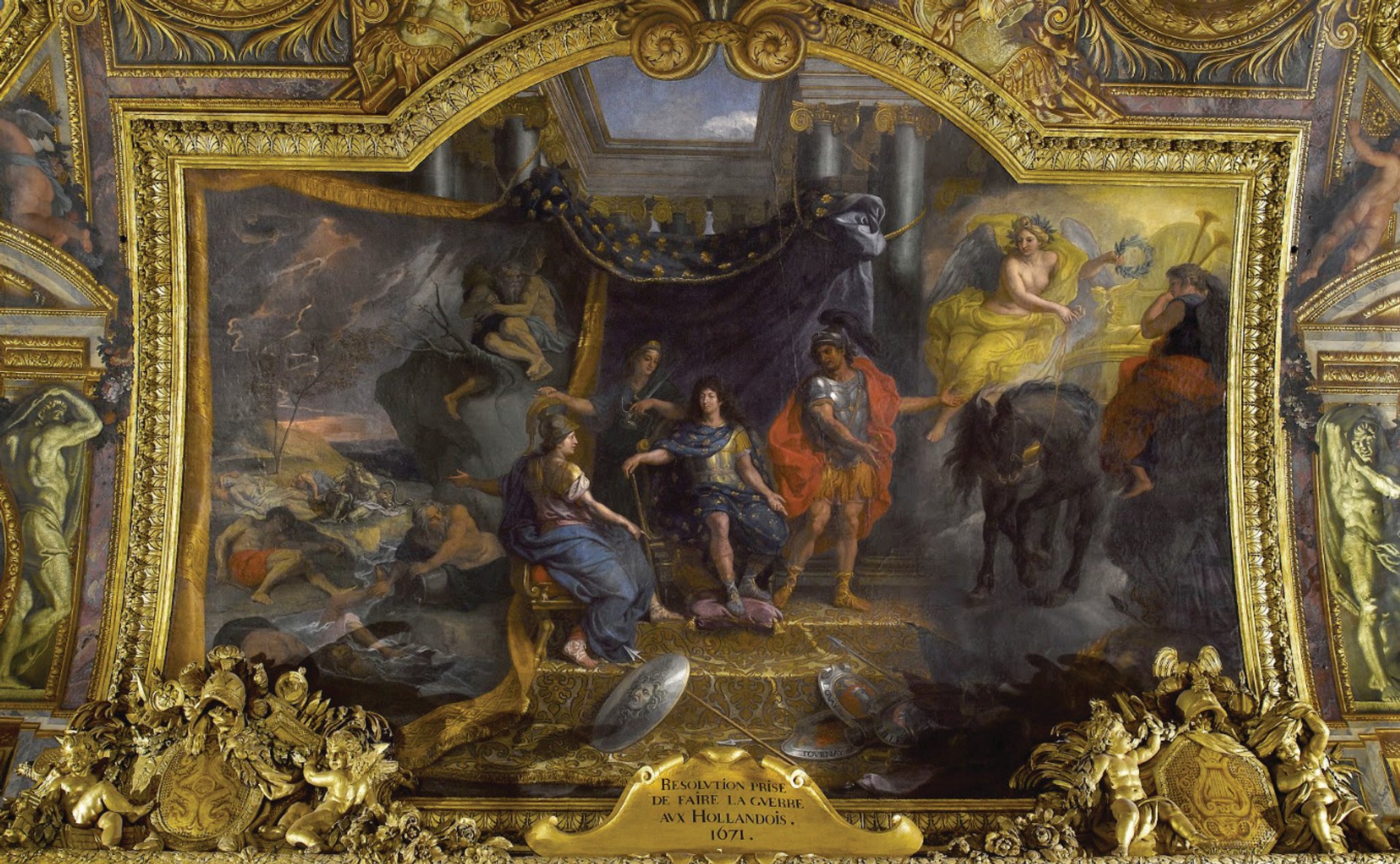
Anniversary events Le roi est mort, Château de Versailles, 27 October-21 February, a programme of operas, concerts and other events accompanies the exhibition, www.chateauversailles-spectacles.fr
A Kingdom of Images: French Prints in the Age of Louis XIV 1660-1715, Getty Center, Los Angeles, until 6 September, travels as Images du grand siècle: l’estampe française sous Louis XIV, Bibliothèque Nationale, Paris, 2 November–31 January 2016, www.getty.edu
Triumph and Disaster: Medals of the Sun King, British Museum, until 15 November, www.britishmuseum.org
La vie quotidienne à Maisons au temps de Louis XIV, Château de Maisons, Maisons-Laffitte, France, until 30 October, www.maisons.monuments-nationaux.fr


